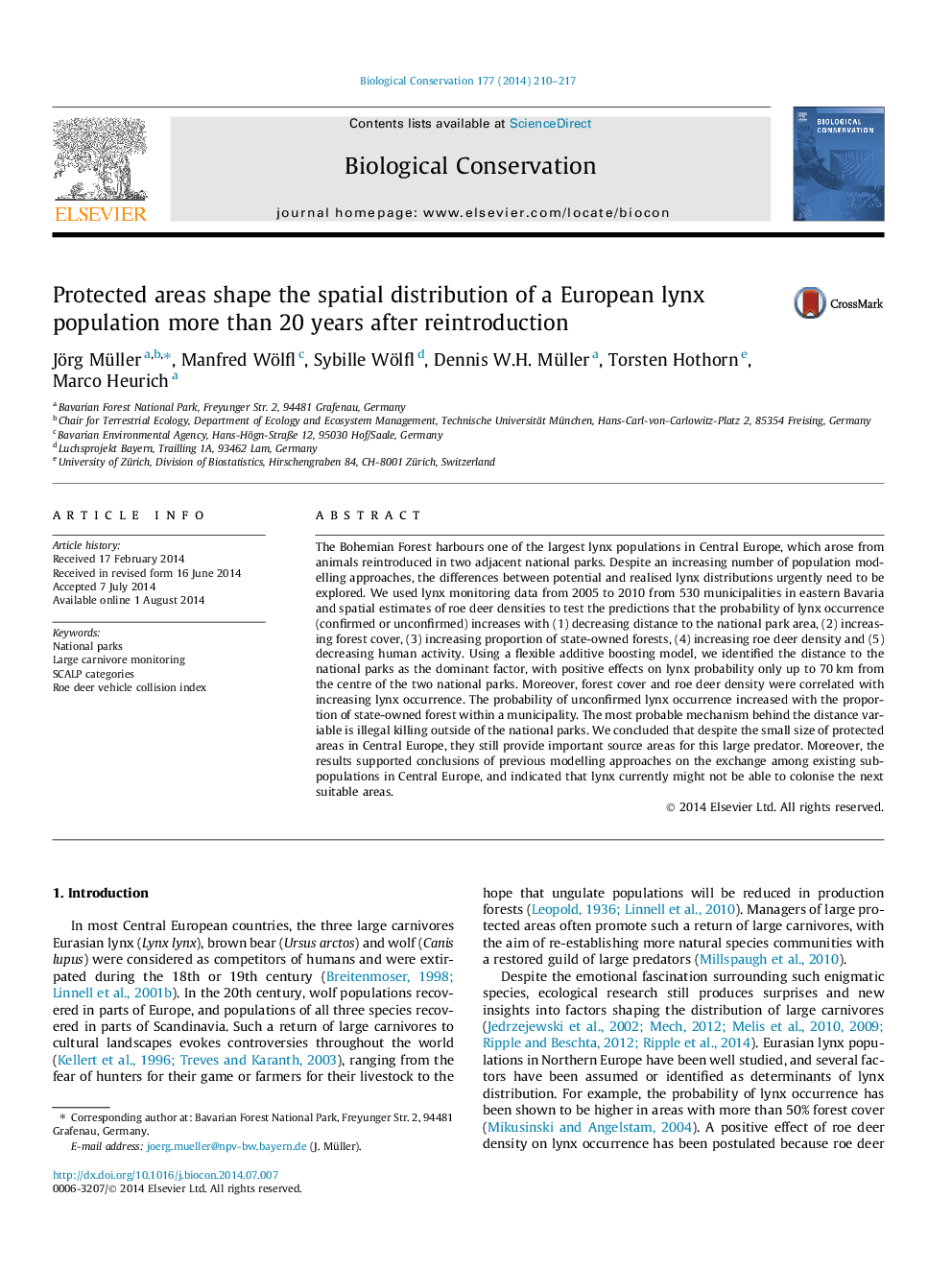| کد مقاله | کد نشریه | سال انتشار | مقاله انگلیسی | نسخه تمام متن |
|---|---|---|---|---|
| 6300230 | 1617924 | 2014 | 8 صفحه PDF | دانلود رایگان |
عنوان انگلیسی مقاله ISI
Protected areas shape the spatial distribution of a European lynx population more than 20 years after reintroduction
ترجمه فارسی عنوان
مناطق حفاظت شده، توزیع فضایی جمعیت روغنی اروپا را بیش از 20 سال پس از بازتولید شکل می دهند
دانلود مقاله + سفارش ترجمه
دانلود مقاله ISI انگلیسی
رایگان برای ایرانیان
کلمات کلیدی
موضوعات مرتبط
علوم زیستی و بیوفناوری
علوم کشاورزی و بیولوژیک
بوم شناسی، تکامل، رفتار و سامانه شناسی
چکیده انگلیسی
The Bohemian Forest harbours one of the largest lynx populations in Central Europe, which arose from animals reintroduced in two adjacent national parks. Despite an increasing number of population modelling approaches, the differences between potential and realised lynx distributions urgently need to be explored. We used lynx monitoring data from 2005 to 2010 from 530 municipalities in eastern Bavaria and spatial estimates of roe deer densities to test the predictions that the probability of lynx occurrence (confirmed or unconfirmed) increases with (1) decreasing distance to the national park area, (2) increasing forest cover, (3) increasing proportion of state-owned forests, (4) increasing roe deer density and (5) decreasing human activity. Using a flexible additive boosting model, we identified the distance to the national parks as the dominant factor, with positive effects on lynx probability only up to 70Â km from the centre of the two national parks. Moreover, forest cover and roe deer density were correlated with increasing lynx occurrence. The probability of unconfirmed lynx occurrence increased with the proportion of state-owned forest within a municipality. The most probable mechanism behind the distance variable is illegal killing outside of the national parks. We concluded that despite the small size of protected areas in Central Europe, they still provide important source areas for this large predator. Moreover, the results supported conclusions of previous modelling approaches on the exchange among existing subpopulations in Central Europe, and indicated that lynx currently might not be able to colonise the next suitable areas.
ناشر
Database: Elsevier - ScienceDirect (ساینس دایرکت)
Journal: Biological Conservation - Volume 177, September 2014, Pages 210-217
Journal: Biological Conservation - Volume 177, September 2014, Pages 210-217
نویسندگان
Jörg Müller, Manfred Wölfl, Sybille Wölfl, Dennis W.H. Müller, Torsten Hothorn, Marco Heurich,
